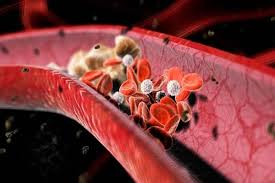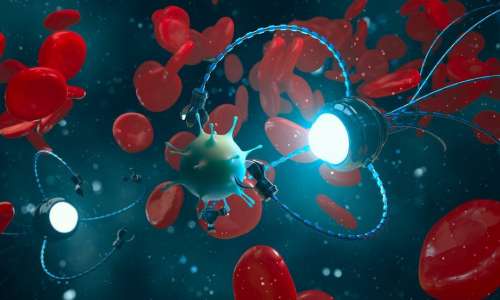Nanomicrobiological robots (PhD in nano-microelectronics)
Researcher and author: Dr. ( Afshin Rashid)
Note: In general , there are two important issues in the construction of nano microbiological robots . First, simulation and design based on macro robots that include propulsion; Communication and orientation is the second and assembly of nano-robot parts. Research in the field of nano-robotics is theoretical and no non-biological synthetic nano-robots have been made so far.
The whole idea behind nano-robots is that when a patient takes a pill to cure any disease, instead of containing a chemical, the pill has a real working machine inside - a nanocarrier. This nanocarrier contains small amounts of the required drug and actually travels to the target organ and delivers the drug to a specific location. The most important advantage of this method is that the drug does not need to travel through different pathways of the body such as blood flow and therefore does not dilute when it reaches its goal. Therefore, drugs delivered through nano-bars are often much more effective than drugs that are normally delivered. Nanobots will be especially useful in treating diseases such as cancer that target specific cells. The most important drawback of the present chemotherapy is that it targets cell types. The drug can not distinguish between healthy cells and cancer cells. Hence, although many cancer cells are killed by drugs, many healthy cells also die, and this greatly weakens the patient. Nanobots will be able to specifically target cancer cells and deliver drugs only to those cells. Although this device will be very useful, it is also difficult to build. Perhaps the biggest problem developers face is how the robots move to the target organs. Even if they manage to build a robot small enough to fit in a pill, it would be useless to do all that is to lie deep in the stomach. One of the proposed mechanisms for detecting the location of nanobots in the body is the use of ultrasonic signals. This nanocar can continuously emit ultrasonic signals, which can be recorded, thus determining the location of the nanobarot. Another method involves the use of miniature cameras that can be attached to the nano-load and sent to the body with the robot. Then they will be able to see the path of these robots through the body.
Bacteria that have magnetic particles can maneuver inside the body using nanocarriers. By changing the surrounding magnetic field, bacteria can move in any direction. This method can be extended to navigate nano-robots. The second problem after navigation is the power in the nanobar. A nano-robot is a machine, and all machines need a source of power. The most obvious way is to create a power source small enough to be mounted on a nano-robot. However, the main problem with such an approach is that a small enough battery is not able to provide the much energy it needs, and therefore the need for alternative sources is considered. One of the best solutions to this problem is to use the human body as a source of energy. This nanobar travels through the bloodstream to reach its goal. The blood contains a number of charged particles in it, which, if used properly, can form a battery for nanocarriers. This nano-robot can be equipped with electrodes and with the help of these electrodes and electrolytes in the bloodstream, a suitable source of electricity can be created. Another option is to provide nano-robots with large amounts of chemicals that burn when they react with blood. The energy released by combustion provides the necessary power for the nanocarrier.
Conclusion :
In general , there are two important issues in the construction of nano microbiological robots . First, simulation and design based on macro robots that include propulsion; Communication and orientation is the second and assembly of nano-robot parts. Research in the field of nano-robotics is theoretical and no non-biological synthetic nano-robots have been made so far.
Researcher and author: Dr. ( Afshin Rashid)
PhD in Nano-Microelectronics




